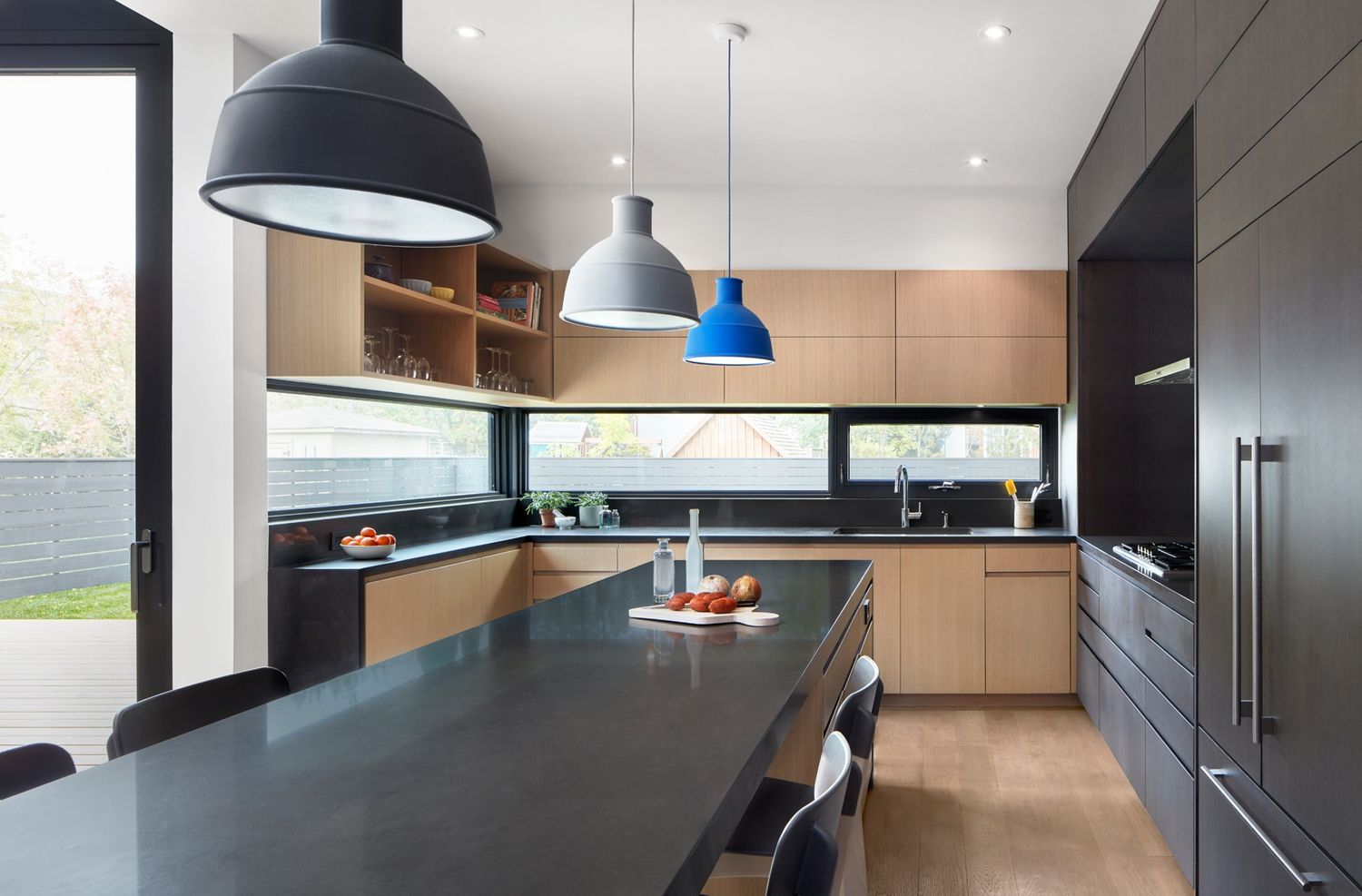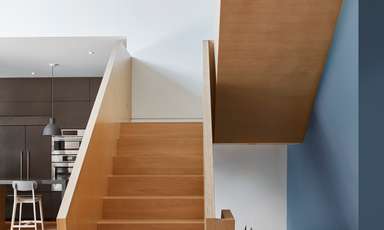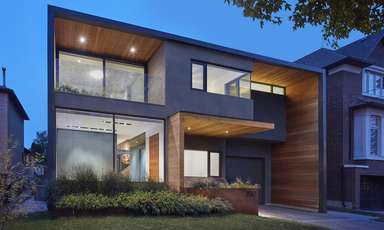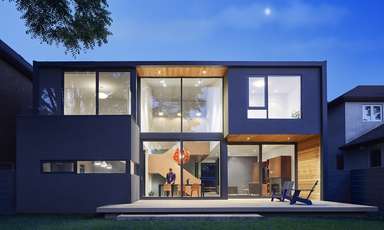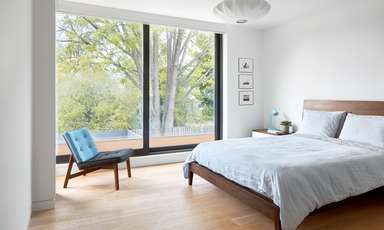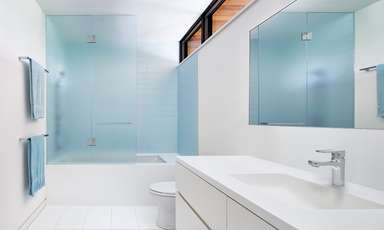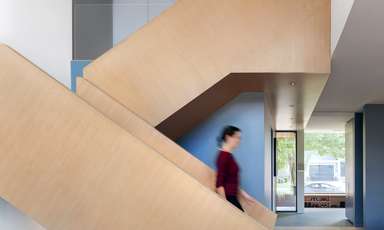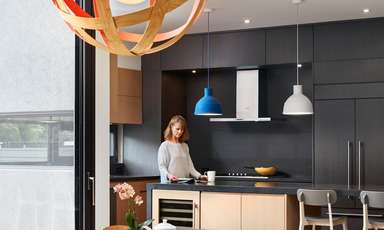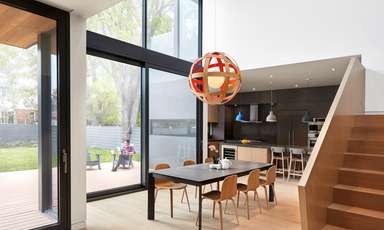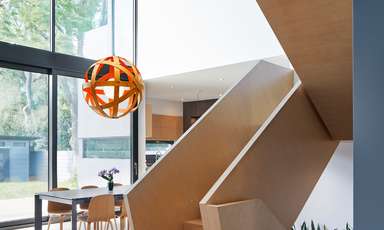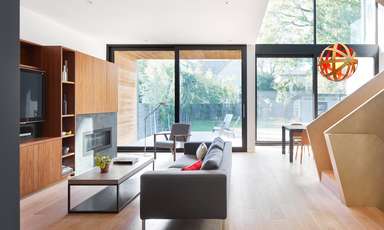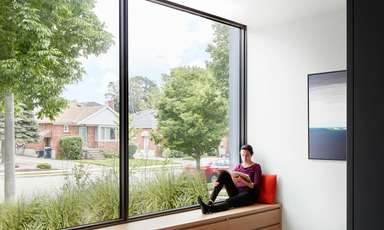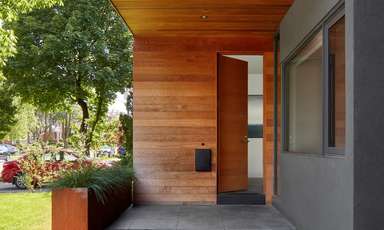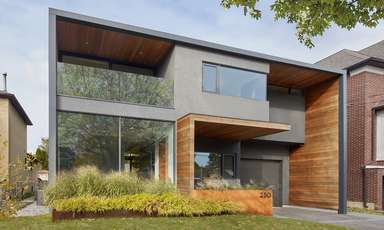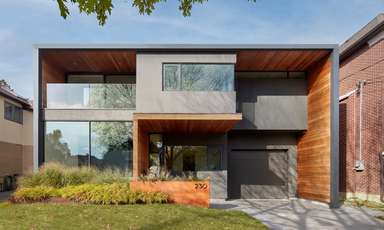In Toronto’s postwar neighbourhoods, modest bungalows are being replaced by faux-historical mansions. Standing in bold contrast is Shift House by Dubbeldam Architecture + Design. An unapologetically modern insertion, Shift House features a stepped façade defined by projecting and retracting volumes, highlighted by contrasting cladding to emphasize the volumetric gestures. Western red cedar fills the void left by retracted volumes, providing a striking foil to the charcoal gray exterior. Meanwhile, the gently sloping roof extends from front to back, maintaining a low datum line on the street as it forms a comparatively horizontal expression.
Shift House’s 300-square-meters are spread over two storeys and, through strategic spatial arrangements, responds to the family’s desire for a meaningful connection with the outdoors. The layout of the house consists of an interior grid of 6 staggered volumes, shifted in and out to shape the exterior envelope. The resulting sculpted façade with its interplay of solids and voids creates opportunities for greater light transmission, additional views, and access to outdoor space at multiple levels through corner windows, generous roof overhangs, green roofs, and balconies on the second floor.
Permeability and openness are dominant design themes throughout the house. The porosity of the front façade is a friendly gesture to the street, and a glazed rear elevation connects the family to the surrounding environment, blurring the boundary between interior and exterior space. The rear facade's protruding and extending volumes form sheltered and covered zones, delineating outdoor areas with differing character. A wide deck across the back of the house effectively doubles the living/dining area in temperate months, becoming a generous outdoor room for dining, reading and relaxation. On the interior adjacent to the backyard, a double-height atrium with a fully-glazed wall provides an expansive view of the neighbourhood’s mature trees, inviting natural light deep into the interior and magnifying the grandeur of this – in truth – modest space. Central to the atrium is a sculptural staircase defined by a solid balustrade of white oak and Baltic birch. Its scissor configuration forms a compelling and dynamic three-dimensional geometric composition, animated by the procession of figures as they ascend and descend between the different levels of the house. The monolithic stair guard's diagonal wood grain imparts a sense of craftsmanship while also evoking a feeling of movement and energy.
Overlap and the blurring of boundaries continues throughout. Just as the exterior’s varied planes hint at internal programmatic changes, the volumetric shifts within the house are further expressed by changes in ceiling height, material, and colour at the thresholds, producing a heightened awareness of these intentional shifts. In the double height space, projecting second storey bedrooms create recessed areas for the kitchen and living room below, while a wood-clad ceiling treatment extends from the staircase to the foyer, defining the edge of one of the internal volumes. Walls painted in shades of grey-blue serve as further defining elements against the white walls and oak flooring.
The house employs many sustainable systems. Strategically placed operable windows maximize passive cooling and natural ventilation, while a small pump powers the radiant in-floor heating system. Photovoltaic panels on the roof provide an additional source of electricity while LED light fixtures and an efficient high-velocity cooling system reduce electricity demand. Green roofs and robust landscaping minimize rainwater run-off, and triple glazing and low-E coatings reduce both heat gain and loss. Visually impactful, Shift House is also environmentally responsible.
